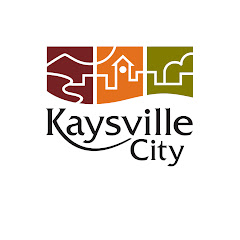(west of Angel Street between 200 North and Burton Lane)
When settlers first arrived in Kaysville in 1849 they made their homes and their living in west Kaysville. William Stewart, John Marriott and Robert W. Burton arrived in Kaysville together with their families in 1852 and eventually built cabins just south of Samuel Oliver Holmes (one of the first settlers) near what was a well traveled road along the last level of the lake, eventually called Bluff or Barren Road. Their homes became known as "Tradesman's Row."
Robert W. Burton was a blacksmith who mended farmers tools and made the first nails in Kaysville. William Stewart made and repaired shoes. John Marriott did many things, including the making of a sawpit in which he and Robert Burton sawed the first lumber for the settlers which provided doors, floors and windows. John Mariott is the ancestor of J. Willard Marriott, a wealthy businessman. The University of Utah Marriott Library and the BYU Marriott Center are named after him.
During the winter of 1851-52, before the cabins were built, William Stewart and his family lived in a wagon box. William kept busy in the wagon box making shoes. William's wife would get a tinpail full of hot coals and put in the wagon box to keep the family warm. In March 1852, John Marriott and Robert Burton worked together and built three homes all in a row. William Stewart's home was built with big logs, with a place for the door and a hole left for the window. There was no door or window to put in so they hung rags as best they could. It had a floor and there were open cracks between the logs along the walls. The chiminey was made of big squares of sod put up like bricks. For the roof, they put some large logs across the top, then some rushes they gathered by the creek, and then a big pile of dirt on top of that so that it would keep most of the rain out. A large log was put across the room for people to sit on.
In those days, people made due with what they had or what they could find. They gathered dry greasewood branches and "buffalo chips" for fuel. Many of the early settlers could not get logs to make a home so they built a dugout which was a square hole on the north side of a hill. Emily Stewart Barnes (daughter of William Stewart) tells many interesting stories in her life history about the early days in this community. In 1856, Emily and Susannah (her sister) went to John Weinel's flour mill. Susannah made Emily ask Mr. Weinel if he could give them a little flour. He looked at her and said, "My child don't you wish you was in heaven? I have nothing but a little bran. I will give you that." They were so pleased as they hurried home. The sack had no string to tie it and they spilled the bran, but gathered it up. When they got home with the bran, their mother made a cake, putting it in a frying pan to cook. When cooked, it became bran again as there was no flour left in it. They were so hungry they ate the dry bran.


No comments:
Post a Comment